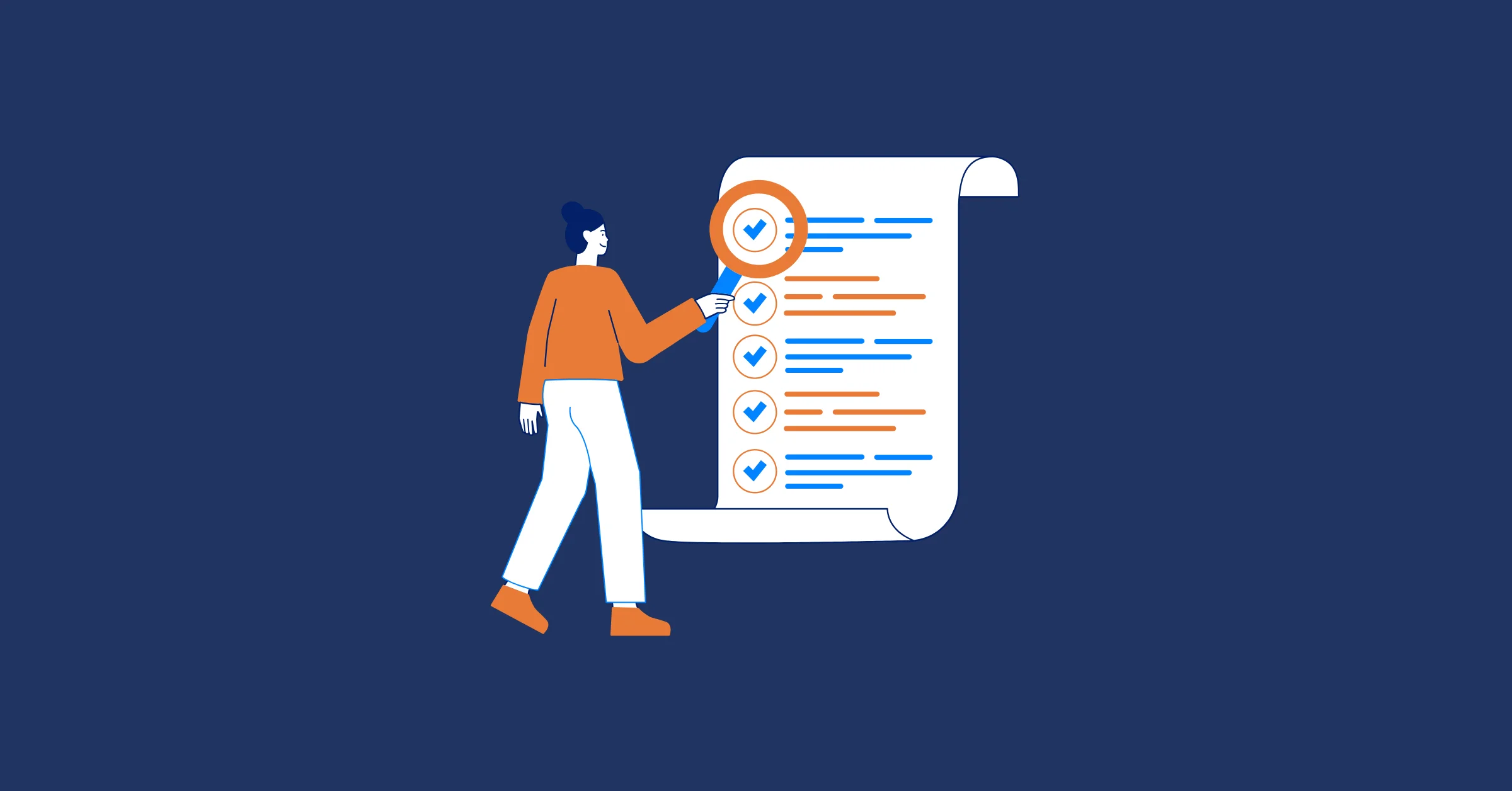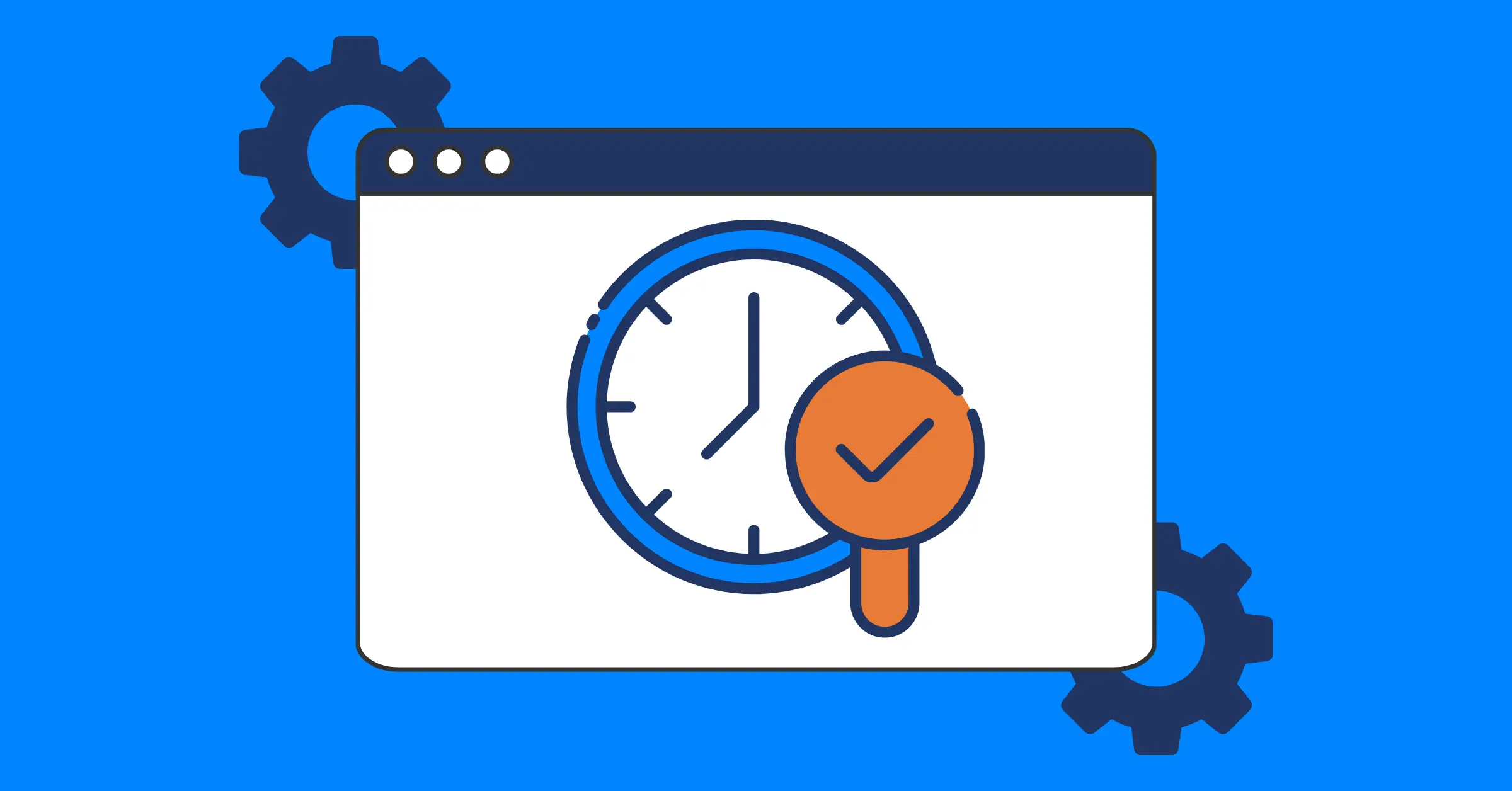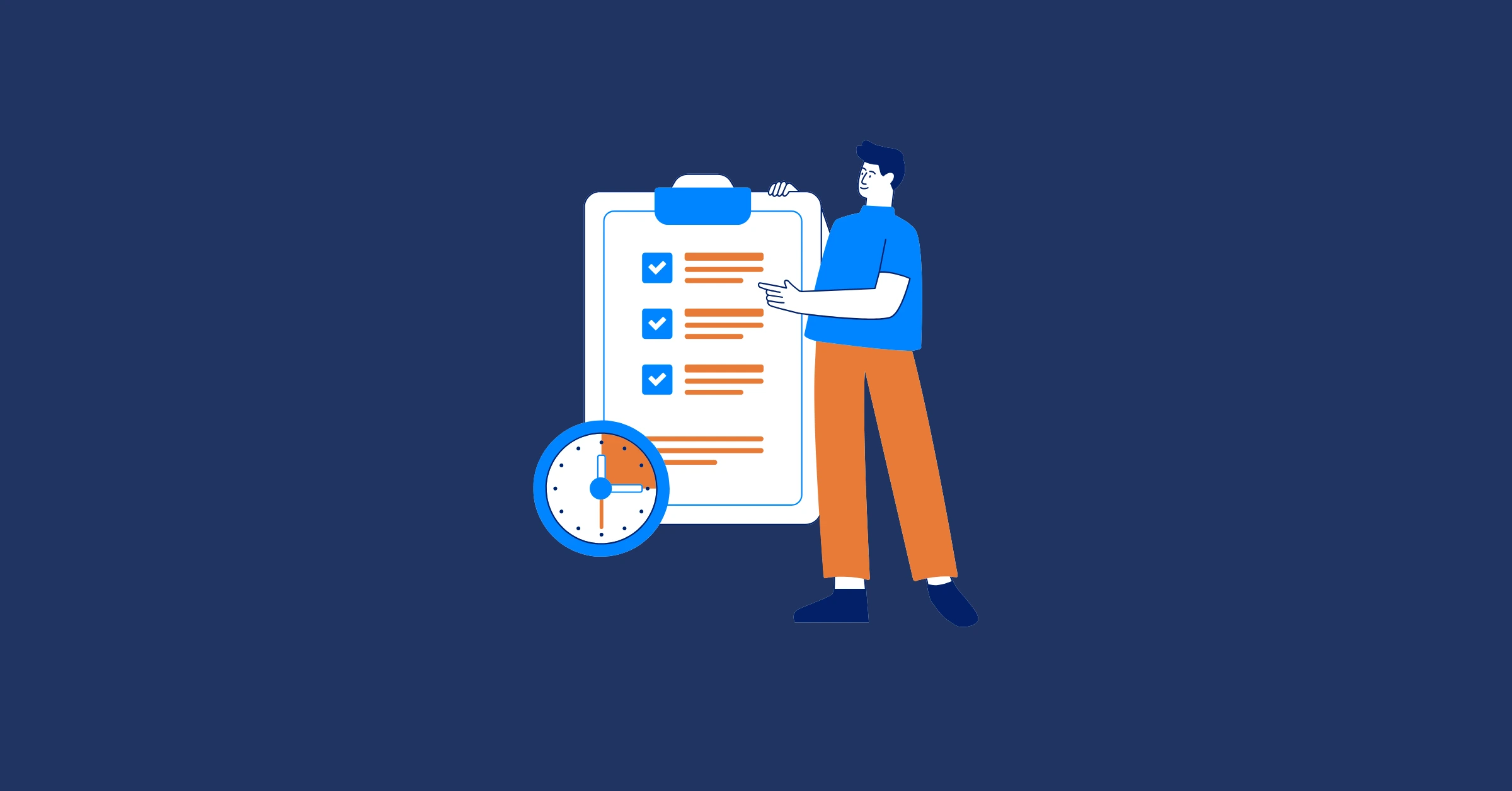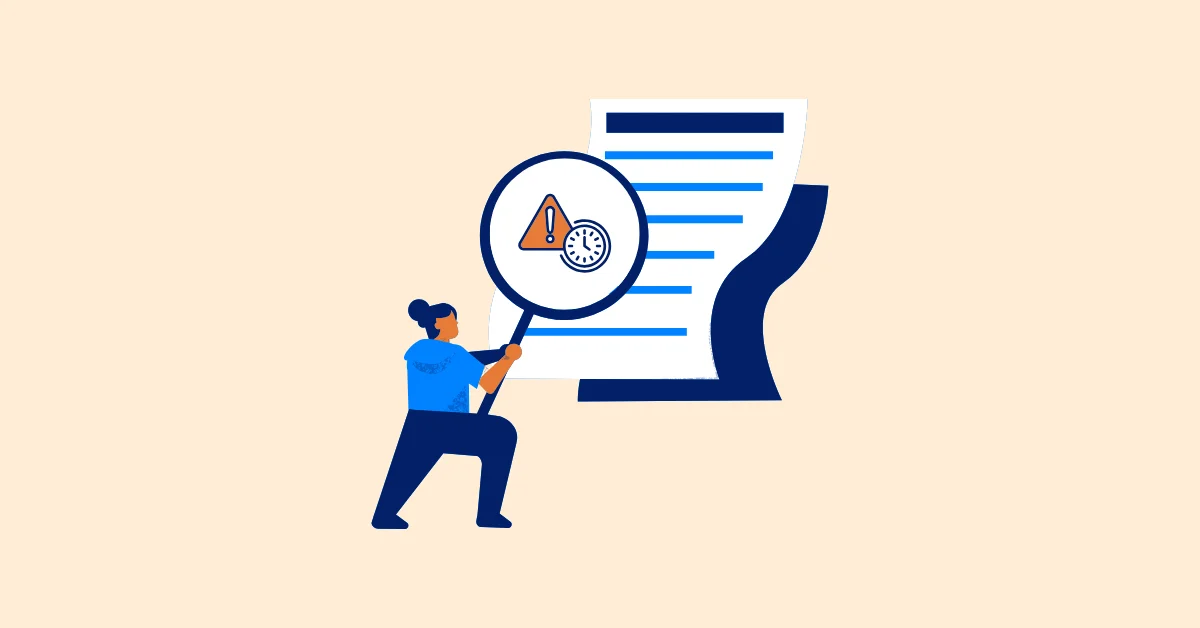How to Prioritize Tasks When There's Too Much To Do
Regain control of your overwhelming to-do list with proven time management strategies that help you prioritize tasks effectively and boost productivity.
When your to-do list feels like it’s spiraling out of control, mastering how to prioritize tasks can bring clarity and calm. Deadlines pile up, emails overflow, and new responsibilities keep emerging. Without a clear system, you might waste time on low-priority items while critical projects fall behind.
This blog post shares the steps to help you prioritize tasks effectively by managing your time effectively, even when you’re swamped. We’ll explore methods to organize your workload and tips to boost productivity, all designed to help you take charge of your day. Let’s dive into actionable steps to tackle your overwhelming to-do list and achieve your goals with confidence.
Why Prioritizing Tasks Matters
Prioritizing tasks means identifying what needs your focus first and what can wait. It’s about aligning your time with your most important goals, not just checking off items. Poor prioritization can lead to missed deadlines, stress, or burnout, leaving you feeling overwhelmed. By learning how to prioritize tasks, you can focus on high-impact activities, reduce decision fatigue, and feel accomplished. Effective prioritization is a cornerstone of time management: it helps you avoid distractions, like spending hours on emails when a major project demands your attention. With time tracking and solid time management strategies, you can manage your workload and maintain balance in your professional and personal life.
6 Practical Steps to Prioritize Your Tasks
These six straightforward steps will help you prioritize tasks and manage your time, even when your to-do list feels unmanageable. Each step is designed to be clear, actionable, and enhanced by time tracking to boost productivity.
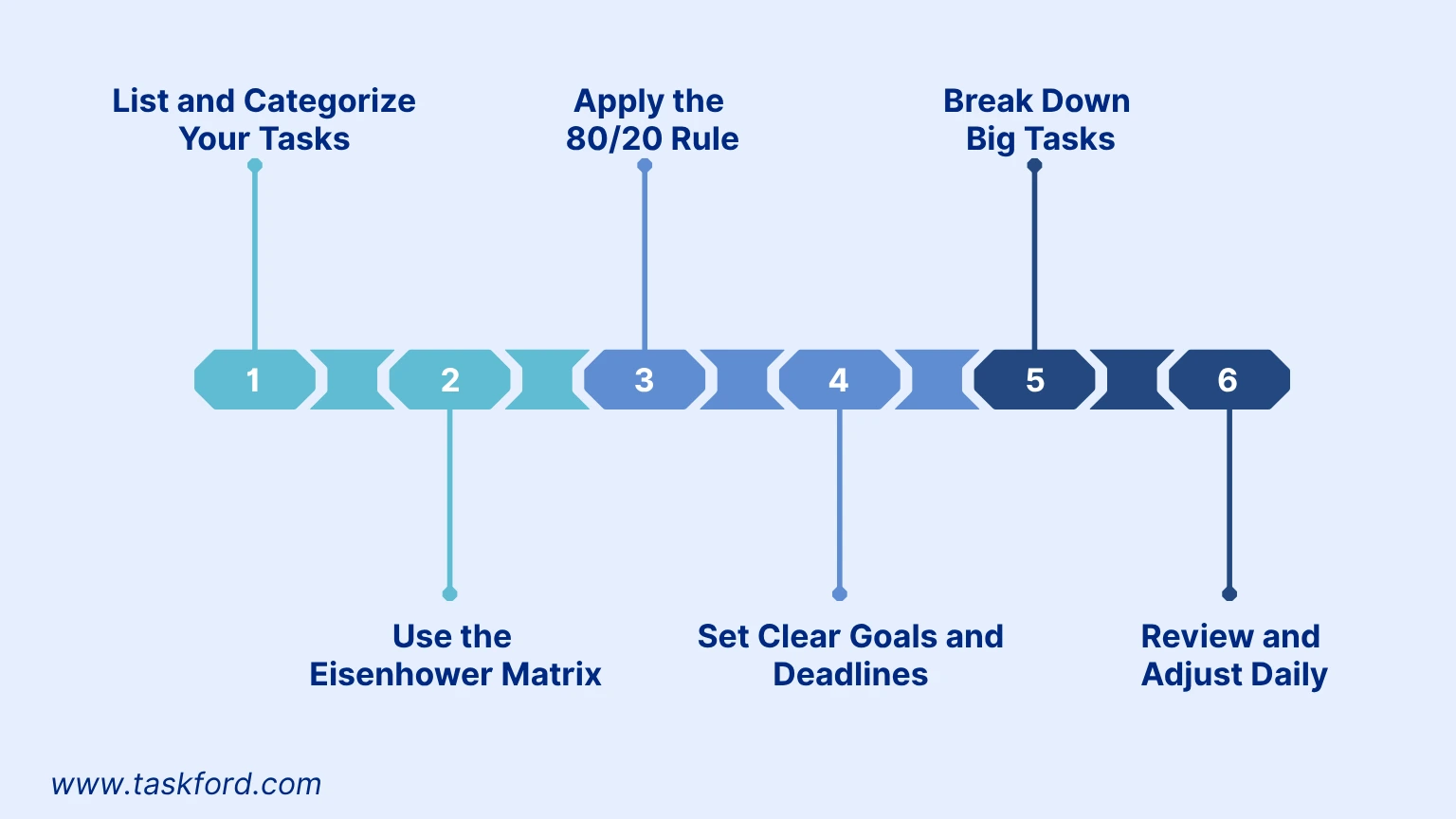
Step 1: List and Categorize Your Tasks
To prioritize effectively, you need a complete picture of your responsibilities. This step sets the foundation for organizing your workload and understanding where your time goes.
Here’s how to get started:
- Write down all tasks: List every task, from work projects and emails to personal errands and long-term goals. Use project management tools like TaskFord, or a notebook to capture everything without worrying about order.
- Group tasks into categories: Sort tasks into buckets like urgent, important, personal, or routine. For example, categorize preparing a client presentation as urgent and grocery shopping as personal.
- Track time to spot inefficiencies: Use time tracking to log how long each category takes. If you’re spending hours on routine tasks like emails, you can adjust to focus on high-priority projects.
This structured approach gives you a clear overview of your workload.
Step 2: Use the Eisenhower Matrix
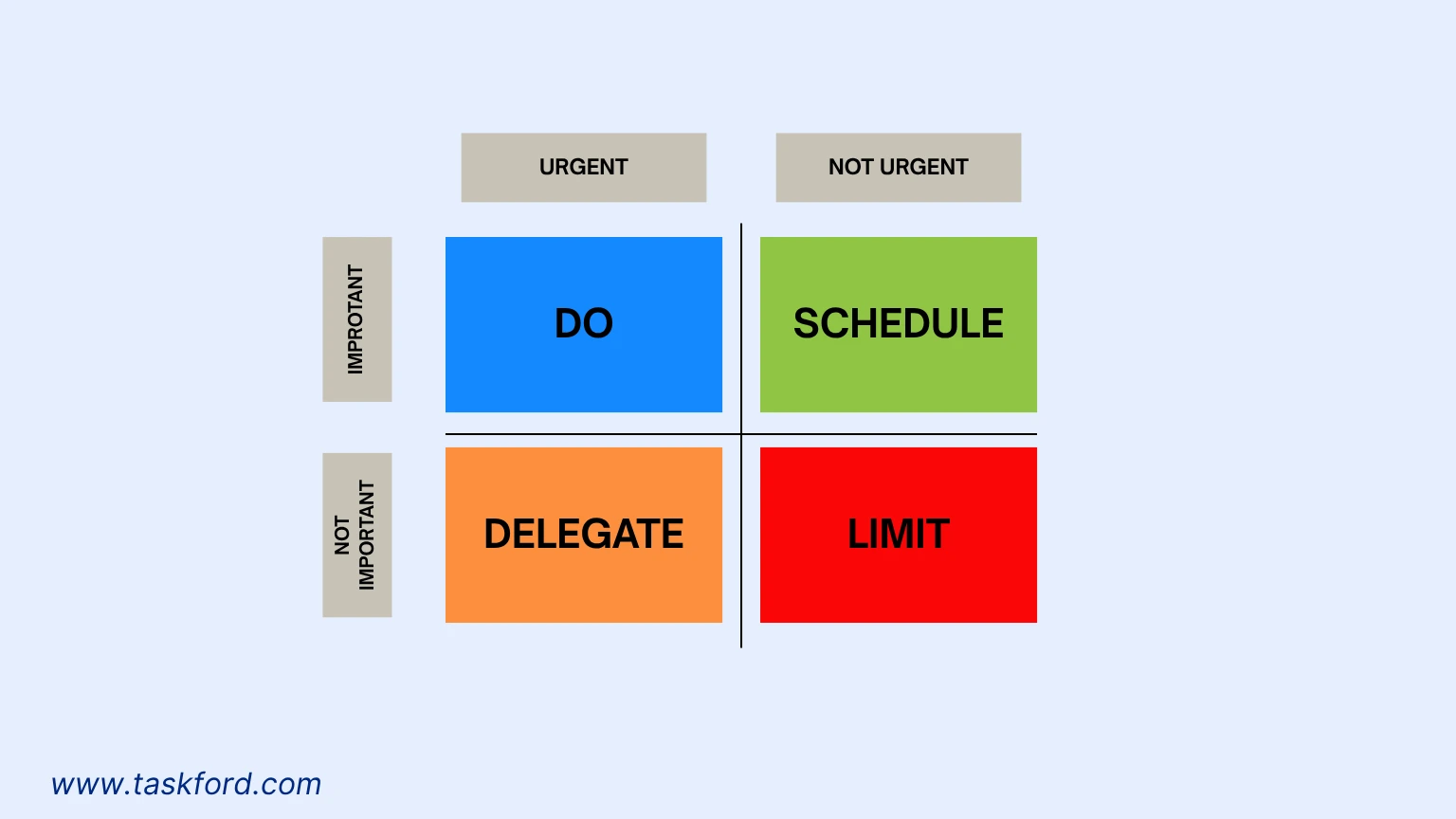
The Eisenhower Matrix is a powerful tool to sort tasks by urgency and importance. It helps you decide what to tackle now, schedule, delegate, or skip. This framework brings clarity to chaotic to-do lists.
Here’s how to apply it:
- Urgent and Important: Do these immediately, like submitting a project proposal or fixing a client issue.
- Important but Not Urgent: Schedule these, like developing a new skill or outlining a quarterly plan.
- Urgent but Not Important: Delegate these when possible, like responding to non-critical emails or scheduling meetings.
- Not Urgent and Not Important: Limit these, like browsing social media or rearranging your desk.
For example, a teacher might prioritize grading exams (urgent and important) over organizing classroom supplies (not urgent, less important).
Step 3: Apply the 80/20 Rule
The 80/20 Rule, or Pareto principle, suggests that 20% of your tasks produce 80% of your results. Identifying these high-impact tasks is key to effective prioritization. For instance, a small business owner might find that refining their sales pitch yields more revenue than updating their website’s layout.
To use this rule, ask:
- Which tasks align with my primary goals? For a student, studying for finals might outweigh extracurricular planning.
- What delivers the greatest long-term benefit? Writing a business proposal could secure a client, unlike minor administrative tasks.
- What saves time or effort later? Setting up a project template now can speed up future work.
Prioritize these high-value tasks first to maximize productivity.
Step 4: Set Clear Goals and Deadlines
Clear goals give your tasks purpose and direction. Without them, you might drift toward less important tasks. Define specific objectives, such as completing a work project, preparing a presentation, or running a 5K. Then, align your tasks with these goals. For example, a sales manager aiming to boost revenue should prioritize calling leads over reorganizing client files.
To stay focused:
- Set specific goals, like “draft project report by Wednesday noon.”
- Assign deadlines to every task to create urgency. For instance, set a due date for researching a topic to avoid delays.
- Use SMART goals (Specific, Measurable, Achievable, Relevant, Time-bound) for clarity. A SMART goal might be “contact 10 clients by Friday to discuss new services.”
Time management helps you monitor how long tasks take, ensuring you meet deadlines without overworking.
Step 5: Break Down Big Tasks
Large tasks, like writing a report or planning an event, can feel overwhelming, tempting you to procrastinate. Breaking them into smaller, actionable steps makes them easier to tackle and prioritize. For example, instead of “plan a conference,” create a list:
- Research venues and book a location.
- Create a guest list and send invitations.
- Develop a schedule for the event.
- Coordinate with vendors for catering and supplies.
This method reduces overwhelm and lets you focus on one step at a time. For instance, a project manager might prioritize booking a venue before designing event flyers.
Step 6: Review and Adjust Daily
Priorities shift as new tasks or urgent issues arise. Regular reviews keep your focus on the right tasks and ensure alignment with your goals. A daily and weekly routine helps you stay adaptable and productive.
Here’s how to do it:
- Spend five minutes each evening reviewing what you completed. Note successes, like finishing a report, and identify unfinished tasks.
- Plan the next day, reprioritizing if an urgent task, like a client request, disrupted your schedule.
- Conduct a weekly review to assess progress toward larger goals, like launching a product, and adjust your task list.
This habit keeps your priorities sharp and your productivity high.
How TaskFord Supports Task Prioritization
TaskFord is an advanced project management and resource planning platform that also offers time tracking and task management tools designed to help individuals and teams stay organized and productive. It offers capabilities common to leading time tracking tools, tailored to enhance task prioritization:
-
Time Tracking: Log time spent on tasks or projects to see where your hours go. This helps identify if low-priority tasks, like excessive email sorting, are consuming too much time.
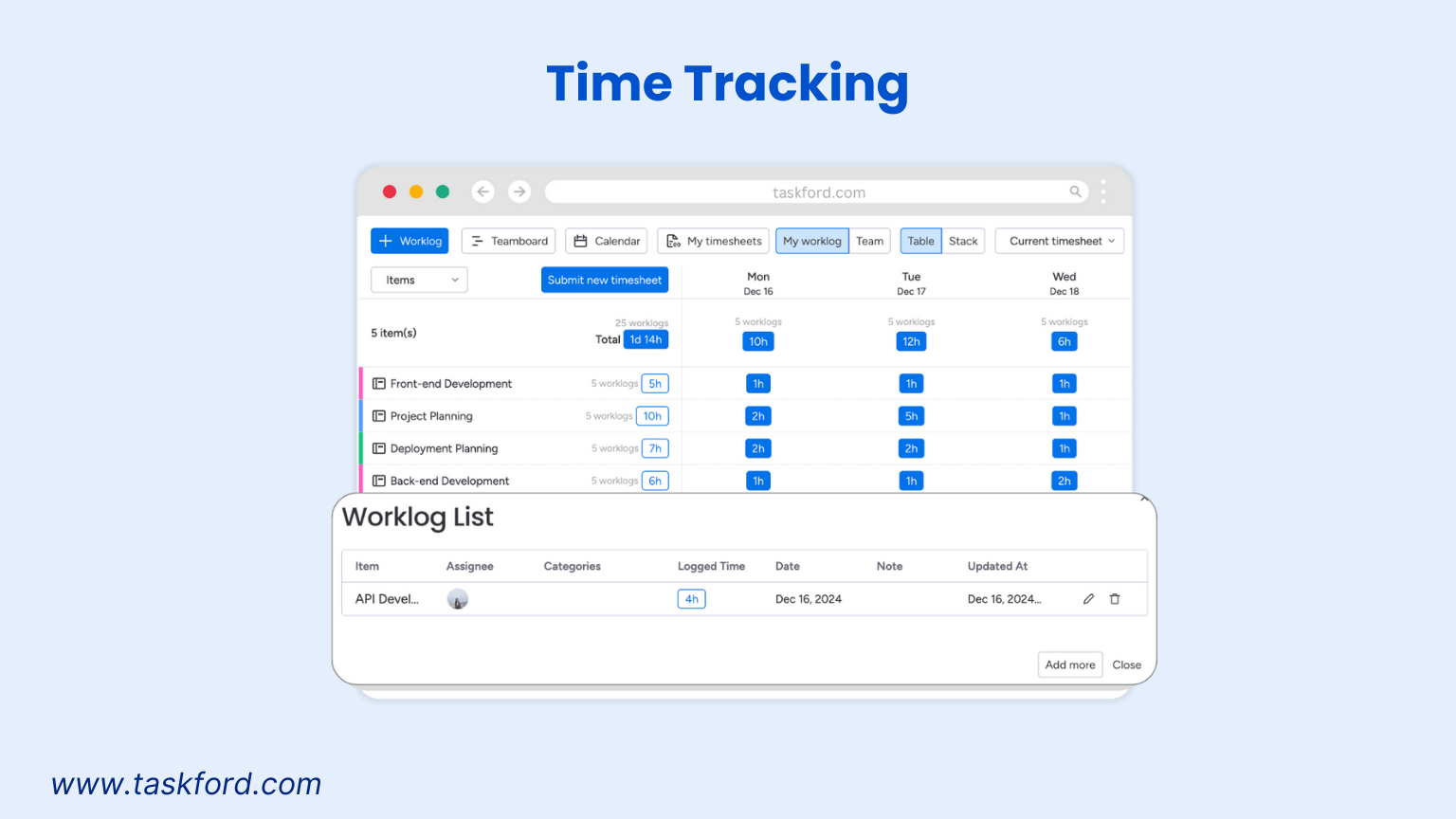
-
Task Organization: Categorize tasks by project or priority level, making it easier to focus on high-impact activities, like completing a client deliverable.
-
Progress Monitoring: Track task and project progress to ensure alignment with goals, with insights to adjust priorities as needed.
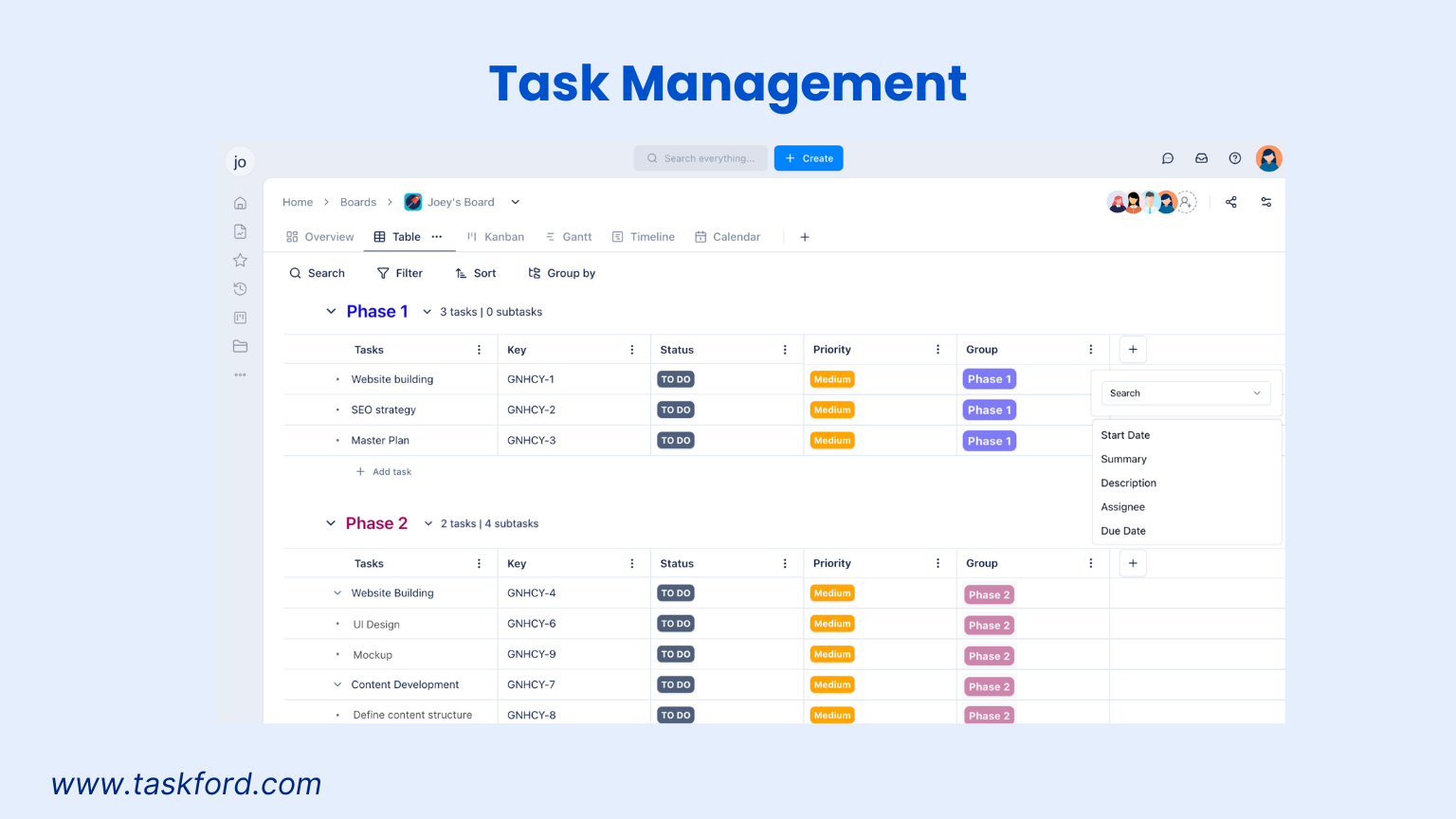
TaskFord’s user-friendly design and regular updates make it a reliable choice for managing tasks. Users appreciate its ability to centralize task management and provide insights into time allocation, helping teams and individuals stay focused.
Avoiding Common Pitfalls
Even with a solid plan, mistakes can derail your prioritization efforts. Avoid these traps:
- Multitasking: Focus on one task at a time to improve quality and speed. For example, writing a report while answering emails slows both tasks.
- Ignoring Energy Levels: Schedule high-priority tasks for when you’re most alert, like mornings if you’re a morning person.
- Overloading Your Schedule: Be realistic about daily tasks to avoid stress. Don’t plan 10 hours of work in an 8-hour day.
- Skipping Breaks: Short breaks boost focus and prevent fatigue. Schedule 5-minute breaks every hour using time tracking.
By avoiding these pitfalls, you ensure your prioritization efforts lead to meaningful progress.
Additional Tools to Stay Organized
Other tools can support task prioritization and time management alongside time tracking:
- To-Do List Apps: Todoist or Microsoft To-Do help you list, sort, and prioritize tasks with deadlines and reminders.
- Calendars: Google Calendar or Outlook allow you to block time for high-priority tasks and avoid scheduling conflicts.
- Pomodoro Technique: Work in 25-minute focused intervals with 5-minute breaks to stay productive on key tasks.
- Kanban Boards: Visualize tasks in columns like “To Do,” “In Progress,” and “Done,” simplifying prioritization.
These tools create a robust system for managing your tasks effectively and complement time tracking efforts.
Saying No to Protect Your Priorities
Saying no is not about being uncooperative. It is about being intentional with your time and making space for the work that truly matters. Before agreeing to take on something new, pause and ask yourself the following:
1. Does this align with my main objectives?
Not all tasks contribute equally to your long-term goals. Ask yourself: Will this help me make meaningful progress on what matters most right now? If your current priority is completing a major report, then saying yes to a new side project might slow you down or create unnecessary distractions. Focus your time and energy where they will have the greatest impact.
2. Can it be delegated or postponed?
You do not have to do everything yourself, and you do not have to do everything immediately. Ask: Is there someone else who can take this on? or Can this wait until I have more availability? Delegating a task to a colleague or postponing it to a less busy time can help you manage your workload without letting things fall through the cracks.
3. Will it disrupt my current priorities?
Every yes requires time, energy, and attention, which means something else may have to wait. Ask yourself: Will taking on this task interfere with deadlines or reduce the quality of my current work? Even small commitments can cause delays if they interrupt your flow or compete with more urgent responsibilities.
Asking these questions helps you make deliberate choices instead of reactive ones. It allows you to protect your time, stay aligned with your goals, and avoid burnout. Saying no, when done respectfully, is not a rejection of others, it is a commitment to your most important work.
Conclusion
Mastering how to prioritize tasks when you’re overwhelmed can transform your productivity and reduce stress. By following these strategies, you can focus on what truly matters. Avoid pitfalls like multitasking, use tools like TaskFord, applying time management strategies and practice saying no to protect your priorities and improve workflow.
Learn more
- Clashing Priorities? Here's How to Solve Schedule Conflicts
- 5 Task Planning Mistakes Even Experienced Project Managers Make (and How to Fix Them)
- How Project Progress is Calculated: Do You Track Every Task or Focus on Milestones?
Making work simpler,
smarter, and more connected
Join our waitlist and be notified first.

Related Blog
Subscribe for Expert Tips
Unlock expert insights and stay ahead with TaskFord. Sign up now to receive valuable tips, strategies, and updates directly in your inbox.

